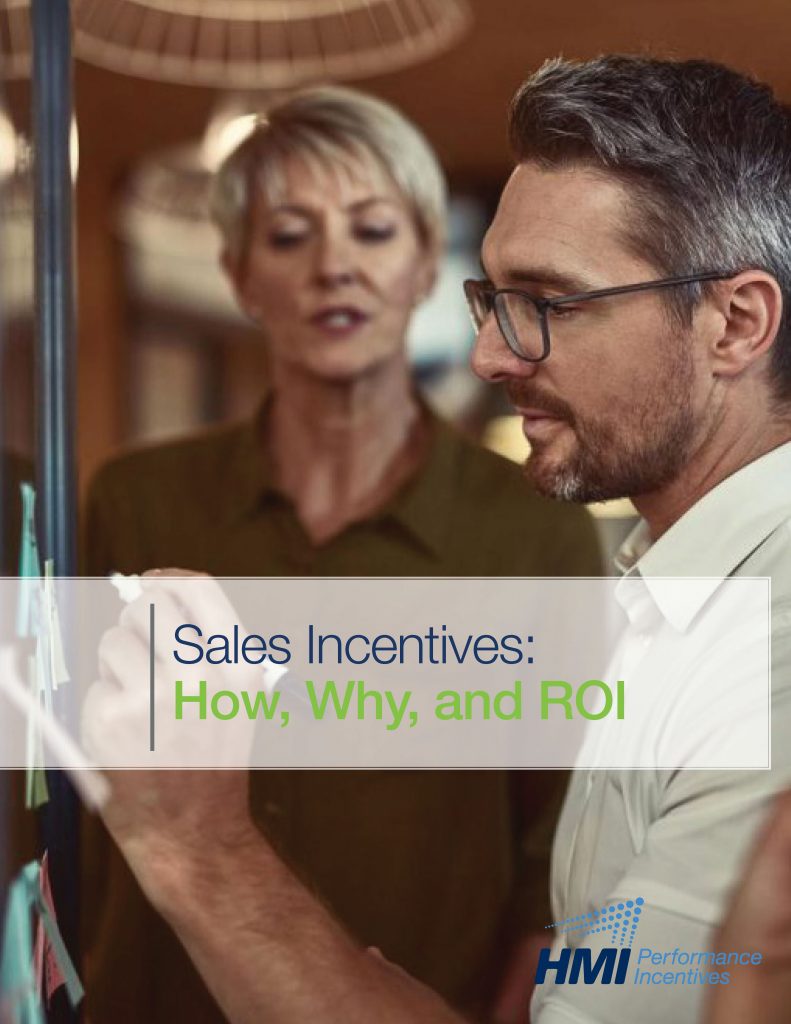Every quarter, the Incentive Research Foundation (IRF) releases a review: a summary of the incentive research they (or others) have been doing recently. From sales incentives to the cash vs. non-cash debate, they cover all things incentives. We like to keep a close eye on these reports, because it allows us to shift and adapt our solutions for our clients based on best practices of the industry.
Moreover, we hope that sharing these reports will help to drive the conversation of why we motivate, how to best change and drive behavior, and what it is we can do to better reach our goals.
So, without further ado, here are a few of our main takeaways from this quarter’s review. Keep in mind, there’s a lot more to the review, so if you want to take a look yourself, click here.
1. Cash vs. Tangible
It’s the age-old question here in the incentive industry: cash or non-cash incentives. While we’ve discussed this a few times in the past, the IRF seems to constantly put out new research affirming non-cash or “tangible” rewards as the champion of this ever-waging battle.
This time around, the research aimed to pin-point the exact conditions where non-cash works better than cash at motivating performance by determining the mentality that participants have toward cash vs. non-cash rewards.
The experiment was run, and it was found that based on a goal attainment structure, non-cash led “to greater effort than goal-based cash rewards” and that the more effort and commitment a participant had toward their goal attainment of that goal would come much quicker and greater.
We’ve seen a lot of similar results from client campaigns as well. It’s clear from our results that people are often motivated much more thoroughly by travel, experiential, or merchandise rewards when trying to drive behavior. For instance, in a classic eLearning promotion, instead of simply offering a cash reward for anyone that finishes a certification, you can enhance your promotion by adding in a chance to win an experiential reward.
When asked about a promotion like this, one participant said, “[I]t is a huge motivation to get those that shy away from trainings to take them. I would definitely say that people are more likely to complete certifications when they know they have a chance to win something. I am sure the manufacturers wish people did not need [an] incentive, but the reality is some do.”
Want a deep dive into sales incentives and how you can make them achieve your goals? Check out our ebook, Sales Incentives: How, Why, and ROI
2. Need vs. Want
Another study that stood out to us was one concerning the nature of the reward itself: was it “utilitarian” (used to alleviate the cost of mundane or everyday tasks) or “hedonic” (used for pleasure and emotional stimulus).
Often times, we B2B companies have to appeal to a “need” over a “want”. Your buyers need to fulfill their orders, or they’ll go out of business. They need to get deals financed or sold, or they won’t get paid. They need to improve efficiencies, or they’ll keep losing money.
It’s a completely different way to sell products or services. As opposed to the B2C world where I really don’t need that bar cart for my living room, but gosh darn it, I want it.
With incentives, though, even in the B2B space, we’re still dealing with motivating people, and people still want things all the time. That’s what this study has helped to determine. The research found that hedonic non-cash rewards worked significantly better than utilitarian non-cash rewards at motivating performance.
3. Sales Incentives: In the Form of Self-Selection.
One-size-fits-all is probably the state of your sales incentive program, according to research. But, also according to research, sales people are oftentimes motivated in very different ways. So, what can you do to ensure your team is as efficient as possible?
This research case underwent several different studies and according to their findings, one way of improving performance is actually to allow sales personnel to pick their own rewards. This strategy, across all studies, amounted to substantial performance over participants in a one-size-fits-all group. Additionally, these results were even seen with previously low performers.
This research stands out to us the most because we often times spend so much time looking outward at ways to motivate our customers or channel partners. We come up with fun and creative ways for people to enroll and earn these fantastic trips or tickets, but we often just offer plain, boring cash for our sales incentives.
Your sales team is one of your most valuable assets, so give them challenging yet achievable goals. Give them the ability to pick their rewards, but don’t give them too many options. No one likes decision paralysis.
Put as much effort into your sales incentive as you do with your customer rewards program and the results will be staggering.
Conclusion
Now, although non-cash rewards are often the go-to when it comes to motivation, there’s still something to be said for examining your audience and seeing what they would prefer. In the review itself, the editor explains that, “The research does not suggest after all, that non-cash rewards and incentives are always better than cash, under any circumstances.”
For example, in the sales incentive instance, you might find that your team simply prefers to be paid in cash. That’s a nuance that you have to be aware of to be successful.
Either way you go, the IRF is full of incredibly helpful research when it comes to motivating change. Check out more of these reports here to learn even more about how you can improve your reward programs.
Sources:








